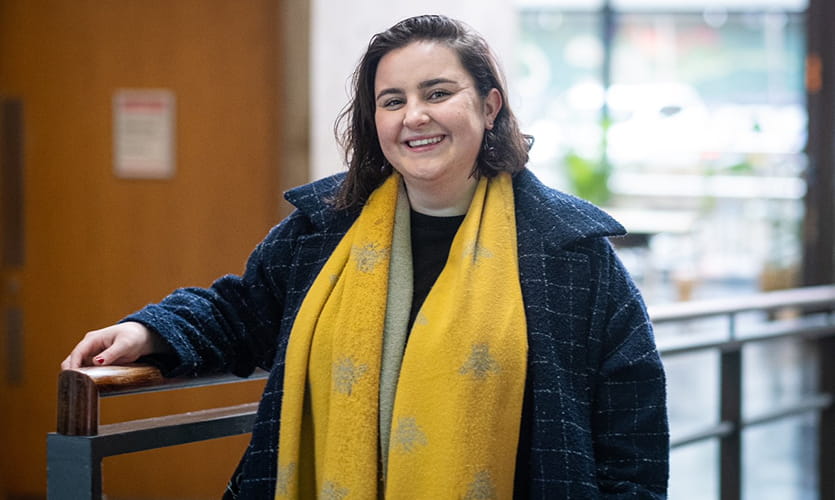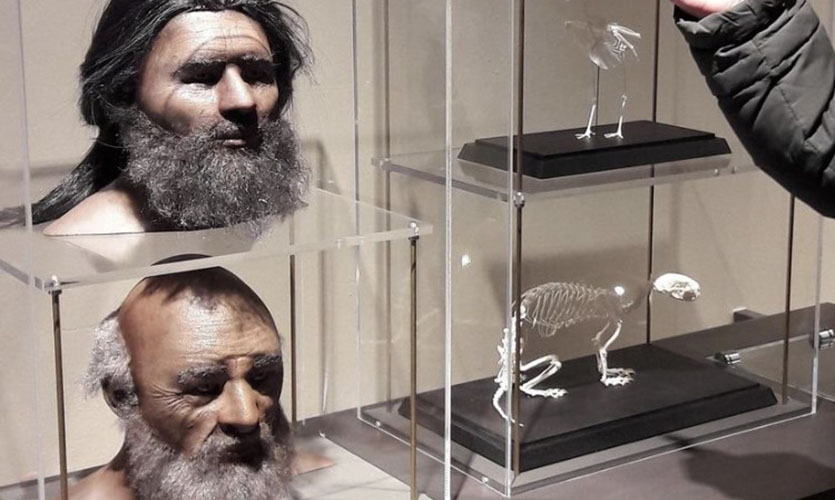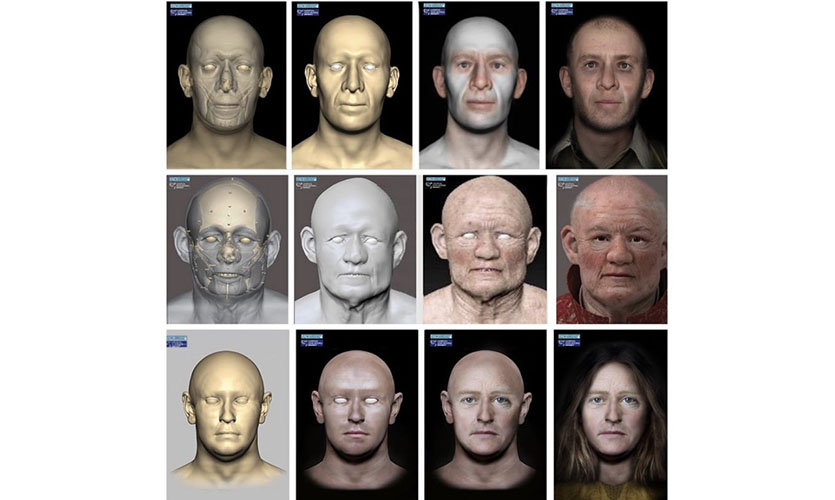Elysia Greenway
Elysia Greenway is a PhD researcher with Face Lab - a research group that carries out forensic and archaeological research and consultancy work, including craniofacial analysis, facial depiction and forensic art.
She features in our ‘Humans of LJMU’ series in collaboration with the ‘Humans of Liverpool’ social media account, sharing the stories of the people who make our city, communities and university the vibrant, inclusive place it is in celebration of our bicentenary year.
In her interview she reflects on how she was drawn to Liverpool because of the impressive status of LJMU’s Face Lab and the intriguing research she is undertaking under the direction of leading expert Professor Caroline Wilkinson.
“I came to Liverpool because of Face Lab. It is world renowned for what we do.”
– Elysia Greenway

Elysia’s ‘Humans of LJMU’ interview
“Whenever there’s unidentified human remains that cannot be identified in any other way, we can approximate what that person may have looked like in life. I am a PhD researcher working on cranial facial identification at Face Lab, a visual research group within Liverpool John Moores University. Recently Face Lab has worked on Ramses II for France TV and other archaeological depictions, such as Richard III and Robert the Bruce. We’ve done some big names, and it’s a world-class institution within the university. I’m proud to be a part of it. Face Lab has also updated Leasowe man, who was found on Leasowe beach on the Wirral. He was originally believed to be as old as Neolithic, but recently it has been discovered that he’s actually Roman. Our updated facial depiction of Hos is currently on display at the Museum of Liverpool, so go check him out.
“We do a lot of archaeological depictions but also have the Face Lab capacity for forensic work. When an investigative body can’t identify someone, for example, there’s no dentition you can compare to. That happens a lot, particularly with refugees and migrants.
“Forensic artists can do things like age progressions - what does Madeleine McCann look like today? Archaeological depictions - what did the real St Nicholas look like? And composite sketches for police from witness statements. My own research is developing methods to try to maximise the potential for recognition when we have unidentified remains, through textual changes, skin details for example, and face perception research.
“I came to live in Liverpool specifically because of Face Lab. It is world renowned for what we do. It’s under the direction of Professor Caroline Wilkinson - who was one of the main creators, along with Richard Neave - and who helped develop the Manchester Method for facial reconstruction that we use at Face Lab. She regularly features on radio and TV talking about Face Lab’s work, and she’s a real inspiration to me. Working alongside her was a massive pull to come to Liverpool and I’ve fallen in love with the city along the way.”



